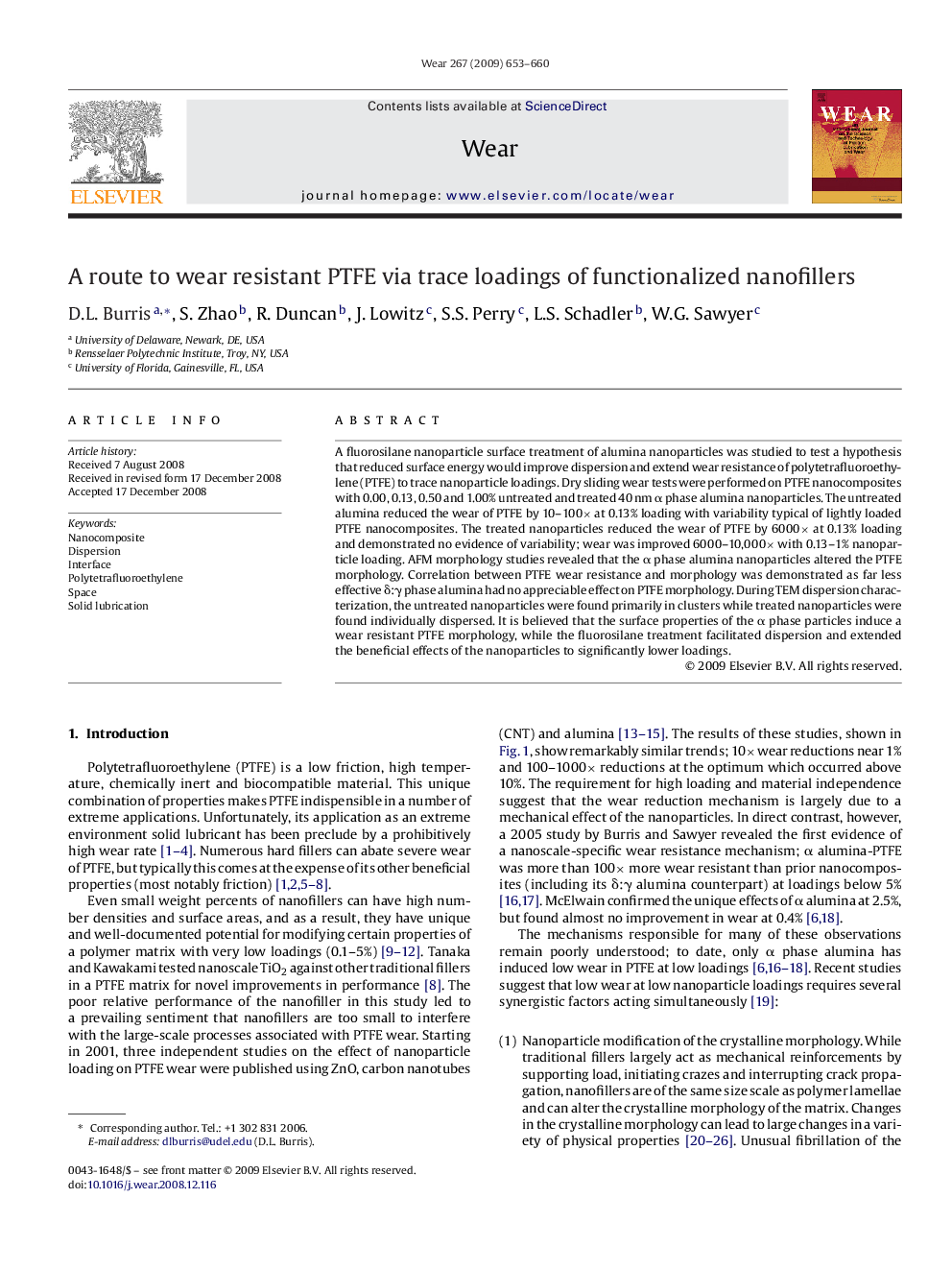| Article ID | Journal | Published Year | Pages | File Type |
|---|---|---|---|---|
| 618781 | Wear | 2009 | 8 Pages |
A fluorosilane nanoparticle surface treatment of alumina nanoparticles was studied to test a hypothesis that reduced surface energy would improve dispersion and extend wear resistance of polytetrafluoroethylene (PTFE) to trace nanoparticle loadings. Dry sliding wear tests were performed on PTFE nanocomposites with 0.00, 0.13, 0.50 and 1.00% untreated and treated 40 nm α phase alumina nanoparticles. The untreated alumina reduced the wear of PTFE by 10–100× at 0.13% loading with variability typical of lightly loaded PTFE nanocomposites. The treated nanoparticles reduced the wear of PTFE by 6000× at 0.13% loading and demonstrated no evidence of variability; wear was improved 6000–10,000× with 0.13–1% nanoparticle loading. AFM morphology studies revealed that the α phase alumina nanoparticles altered the PTFE morphology. Correlation between PTFE wear resistance and morphology was demonstrated as far less effective δ:γ phase alumina had no appreciable effect on PTFE morphology. During TEM dispersion characterization, the untreated nanoparticles were found primarily in clusters while treated nanoparticles were found individually dispersed. It is believed that the surface properties of the α phase particles induce a wear resistant PTFE morphology, while the fluorosilane treatment facilitated dispersion and extended the beneficial effects of the nanoparticles to significantly lower loadings.
